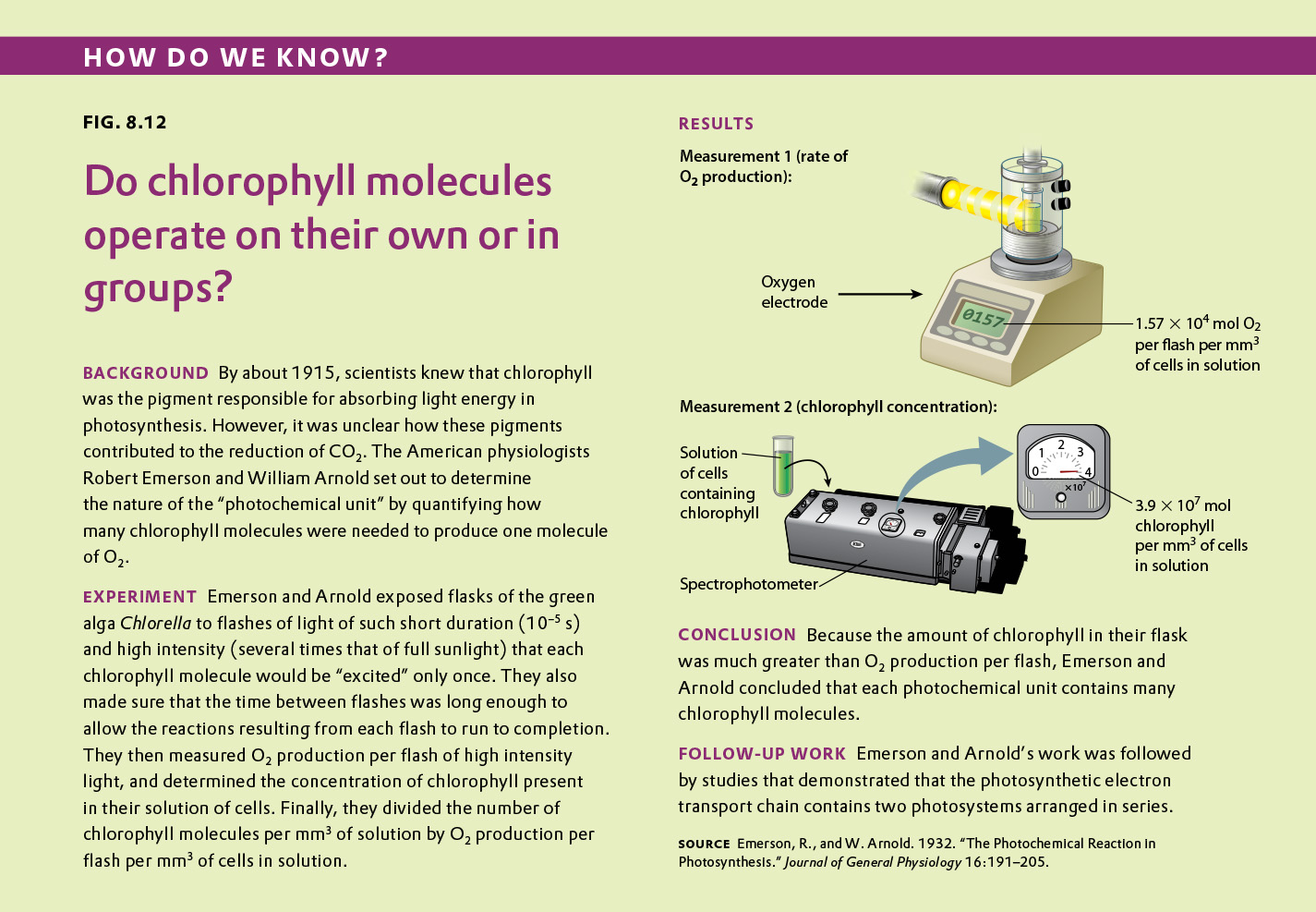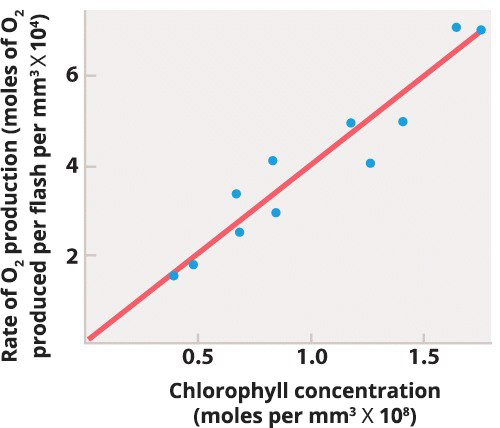Chapter 1. Working With Data 8.12
Working with Data: HOW DO WE KNOW? Fig. 8.12
Fig. 8.12 describes experiments showing that chlorophyll molecules act in groups to transform light energy into chemical forms that can be used to produce carbohydrates from CO2 and H2O. Answer the questions after the figure to practice interpreting data and understanding experimental design. These questions refer to concepts explained in the following three brief data analysis primers from a set of four available on Launchpad:
- Experimental Design
- Statistics
- Scale and Approximation
You can find these primers by clicking on “Experiments and Data Analysis” in your LaunchPad menu. Within the following questions, click on “Primer Section” to read the relevant section from these primers. Click on the button labeled “Key Terms” to see pop-up definitions of boldface terms.

Question
In the experiment described in Figure 8.12, the rate of O2 production was 1.57 x 104 moles per flash per mm3 of solution. The concentration of chlorophyll present in the solution of cells was 3.9 x 107 moles per mm3. (A mole is 6.02 x 1023 molecules.) Which of the following statements is true?
| A. |
| B. |
| C. |
| D. |
| E. |
| order of magnitude | The number of times you must multiply a single digit number by ten to obtain the value in question. |
Scale and Approximation
When a biologist does an experiment or completes a calculation, she often strives for quantitative precision. Commonly, however, it is just as important to be able to approximate – to get a ball park sense of the right answer that will rapidly help her to determine the next step in her research. One way to approximate is to make an order of magnitude comparison. Order of magnitude is commonly discussed in terms of the powers of ten – how many times you must multiply a single digit number by ten to obtain the value in question. 1492, for example, is equal to 1.492 x 1000, or 1.492 x 10 x 10 x 10. The order of magnitude of 1492, then, is 3. 1620 also has an order of magnitude of 3, but the order of magnitude of 16,200 is 4:
16,200 = 1.62 x 10 x 10 x 10 x 10
Exponents and Order of Magnitude
Order of magnitude is most easily evaluated when numbers are presented in what is commonly called scientific notation: a number between one and ten is multiplied by ten by a number of times indicated by a small superscript called the exponent.
1492 = 1.492 x 103
16,200 = 1.62 x 104
Exponents also enable us to approximate the ratio of two numbers. We simply subtract one exponent from the other:
16,200/1492 = (1.62 x 104)/(1.492 x 103)
= 1.62 x 10(4−3)/1.492
= (1.62/1.492) x 101
In many cases, we’ll want to know that the exact value of this ratio is 10.86, but as an approximation, exponents tell us that the larger number is an order of magnitude greater than the smaller.

